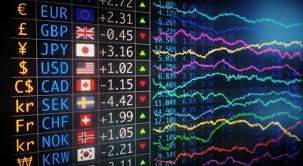
Forex Trading Explained: A Comprehensive Guide
Forex trading, or foreign exchange trading, is the process of purchasing and selling currencies in the global market. A vast and decentralized market, the forex arena operates 24 hours a day, five days a week. FX Trading UZ is a resource that offers insights and tools for traders at all levels, from beginners to experienced professionals. Understanding the fundamentals of forex trading is essential for anyone looking to enter this dynamic field.
What is Forex Trading?
The forex market is the largest and most liquid financial market in the world, with a daily trading volume exceeding $6 trillion. It allows individuals, companies, and institutions to exchange currencies for various purposes, including international trade and investment.
Currency Pairs
In forex trading, currencies are traded in pairs. The first currency in the pair is the base currency, while the second is the quote currency. For example, in the currency pair EUR/USD, the Euro (EUR) is the base currency, and the US Dollar (USD) is the quote currency. When you buy this pair, you are buying Euros and simultaneously selling US Dollars. Understanding how to read currency pairs is crucial for successful trading.
How Forex Trading Works
Forex trading involves speculating on the value of one currency against another. Traders analyze various economic indicators, charts, and geopolitical events to make informed decisions. Unlike other financial markets, forex operates on a decentralized model, which means that transactions occur over-the-counter (OTC) rather than through a centralized exchange.
Key Concepts in Forex Trading
Leverage
Leverage is one of the most significant features of forex trading. It allows traders to control a larger position with a smaller amount of capital. For example, a leverage ratio of 100:1 means that for every $1 you deposit, you can trade up to $100. While leverage can amplify profits, it also increases the risk, potentially leading to greater losses. Therefore, understanding how leverage works is critical for effective trading.
Margin

Margin refers to the amount of capital required to open a leveraged position in forex trading. It is typically expressed as a percentage. For example, if your broker allows a margin of 1%, you would need $1,000 to control $100,000 worth of currency. Maintaining sufficient margin is crucial to avoiding margin calls, which occur when a trader’s equity falls below the required level.
Pips and Points
Pips (percentage in points) are the smallest price movement that can occur in the forex market. Most currency pairs are quoted to four decimal places, where one pip represents a change of 0.0001. Understanding how to calculate pips is essential for measuring price movements and calculating profits and losses.
Types of Forex Analysis
Fundamental Analysis
Fundamental analysis involves evaluating economic indicators, news events, and geopolitical developments to forecast currency movements. Traders who use this approach closely monitor data such as GDP growth, employment rates, inflation, and interest rates, as these factors can significantly influence currency values.
Technical Analysis
Technical analysis focuses on price trends and chart patterns. Traders utilize various tools, such as moving averages, trend lines, and candlestick patterns, to identify potential entry and exit points. This method relies on historical price data and market psychology, making it a popular choice among day traders.
Strategies for Successful Forex Trading
Scalping
Scalping is a trading strategy that involves making numerous trades within a day to capitalize on small price movements. Scalpers aim to make quick profits by entering and exiting positions rapidly. This strategy requires a deep understanding of market dynamics and a high tolerance for risk.
Day Trading

Day trading involves opening and closing positions within the same trading day. Day traders do not hold positions overnight to avoid exposure to potential market changes that can occur while the market is closed. This strategy requires a rigorous analysis of market movements and timely decision-making.
Swing Trading
Swing trading is a longer-term strategy where traders hold positions for several days or weeks to capture larger price movements. This approach is suitable for those who cannot dedicate significant time to trading daily. Swing traders typically rely on technical analysis and fundamental factors to identify potential trends.
Getting Started with Forex Trading
Choosing a Broker
To begin trading forex, the first step is to select a reputable broker. Look for a broker that offers a user-friendly trading platform, competitive spreads, and a wide range of currency pairs. It’s also essential to consider factors such as regulatory compliance, customer support, and educational resources.
Opening a Trading Account
Once you’ve selected a broker, you can open a trading account. Most brokers offer different types of accounts, including demo accounts for practice and live accounts for actual trading. A demo account is an excellent way to familiarize yourself with the trading platform and practice your skills without risking real money.
Developing a Trading Plan
Having a trading plan is fundamental for success in forex trading. Your plan should outline your trading goals, risk tolerance, and strategies. It should also include guidelines for your entry and exit points, as well as your approach to money management.
Conclusion
Forex trading can be a rewarding endeavor, but it requires adequate knowledge, skills, and discipline. By understanding the fundamentals, utilizing the right strategies, and staying informed about market trends, traders can enhance their chances of success in this dynamic and fast-paced environment.
